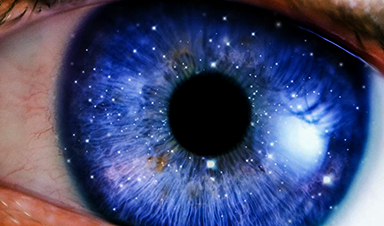In March 2020, Hannu Rajaniemi pivoted his biotech company Helix Nanotechnologies’ focus from cancer therapies to Covid-19 vaccines.
The role biotech start-ups can play in a pandemic
Rajaniemi originally co-founded Helix Nanotechnologies in Cambridge, Massachusetts in 2013 to develop cancer therapeutics, which was a personal mission: His mother got sick with and eventually passed due to metastatic breast cancer.
When the company pivoted to working on Covid-19 vaccines, he knew his start-up wouldn’t be one of the first vaccines out of the gate.
“That would have required billions in [Operation] Warp Speed funding,” Rajaniemi says. (HelixNano has received $6.4 million in total funding as of May, according to Crunchbase, from investors including Y Combinator, and has received grant money from Google billionaire Eric Schmidt’s Schmidt Futures.
“In this crisis, the role of a start-up is to pursue more technically challenging, second-generation approaches and find solutions that the less agile bigger players might miss,” he says.
While the first wave of Covid vaccines distributed in the United states from Pfizer/BioNTech, Moderna and Johnson & Johnson have to adapt their vaccines to new strains, HelixNano’s booster vaccine is designed to “provide much broader immunity,” he says.
“The reason we got into this … was that we were worried about mutated SARS-CoV-2 strains able to evade vaccine immunity,” Rajaniemi says. “That is exactly the scenario that is now playing out with the South African, Brazilian and other emerging variants.”
New vaccine technologies: Essentially ‘a zoom function and an amplify function’
Developing a vaccine that is resistant to virus mutations is “an extremely challenging problem technically,” Rajaniemi says.
But with the advantage of being able to build on all the knowledge scientists now have about the virus, HelixNano invented “two completely new vaccine technologies” for which they’ve filed for patents, according to Rajaniemi.
“Essentially, we have a ‘zoom’ function and an ‘amplify’ function for mRNA vaccines,” he says. (Both the Pfizer-BioNTech and Moderna vaccines are mRNA technology, as is Helix Nanotechnologies’ booster.)
“We can make vaccines both more targeted and more powerful than was previously possible,” says Rajaniemi.
The first technology Helix Nanotechnologies developed makes vaccines more accurate.
“Traditional vaccines are blunt instruments. You show the immune system a bit of the virus — like the spike protein that SARS-CoV-2 uses to infect cells — and [the body] generates antibodies against it,” Rajaniemi says. And “those antibodies are essentially random.”
However, HelixNano’s new technology directs antibodies at a very specific part of the virus’ spike protein that “matters the most for preventing infection,” according to Rajaniemi.
“To use a nerdy analogy, imagine the virus is the Death Star [space station from Star Wars]. To blow it up you need to hit a very small target — the thermal exhaust port,” says Rajaniemi (who is also a published science fiction author).
“Your X-Wings [starfighters] could just randomly fire at the whole Death Star, but you would have to get very, very lucky to destroy it,” he says.
“But if you concentrate all your fire on the exhaust port, you have a much better chance — even if your shots get less accurate as the virus mutates.”
The second vaccine technology HelixNano developed is a way to multiply the body’s immune response to a specific vaccine target by a factor of 100.
© Provided by CNBC
Taken together, these two technological advances are what HelixNano has used to build their Covid-19 mutation-resistant booster vaccine.
Beyond its own vaccine technology innovations, HelixNano is also collaborating with Louis Falo’s lab at University of Pittsburgh to make a vaccine technology that can be applied to the skin, rather than by a shot, which therefore can be self-administered.
“The mRNA platform has proven to be effective for vaccination, but does have limitations including the requirement for very low temperatures (cold-chain) across the storage, delivery, and deployment process,” says Falo, who is chairman of the dermatology department at the University of Pittsburgh and a bioengineering professor.
“We imagine an mRNA vaccine that is stable at room temperature and can therefore be readily deployed in global vaccination campaigns the same way that one would distribute and apply Band-Aids.”
(Separately, Falo’s lab has its own skin application vaccine called PittCoVacc, which has submitted preclinical data to the Food and Drug Administration as a Pre-Investigational New Drug Application application.)
Image Credit: CNBC
Post by Amanda Scott, NA CEO. Follow her on twitter @tantriclens
Thanks to Heinz V. Hoenen. Follow him on twitter: @HeinzVHoenen
News
Lower doses of immunotherapy for skin cancer give better results, study suggests
According to a new study, lower doses of approved immunotherapy for malignant melanoma can give better results against tumors, while reducing side effects. This is reported by researchers at Karolinska Institutet in the Journal of the National [...]
Researchers highlight five pathways through which microplastics can harm the brain
Microplastics could be fueling neurodegenerative diseases like Alzheimer's and Parkinson's, with a new study highlighting five ways microplastics can trigger inflammation and damage in the brain. More than 57 million people live with dementia, [...]
Tiny Metal Nanodots Obliterate Cancer Cells While Largely Sparing Healthy Tissue
Scientists have developed tiny metal-oxide particles that push cancer cells past their stress limits while sparing healthy tissue. An international team led by RMIT University has developed tiny particles called nanodots, crafted from a metallic compound, [...]
Gold Nanoclusters Could Supercharge Quantum Computers
Researchers found that gold “super atoms” can behave like the atoms in top-tier quantum systems—only far easier to scale. These tiny clusters can be customized at the molecular level, offering a powerful, tunable foundation [...]
A single shot of HPV vaccine may be enough to fight cervical cancer, study finds
WASHINGTON -- A single HPV vaccination appears just as effective as two doses at preventing the viral infection that causes cervical cancer, researchers reported Wednesday. HPV, or human papillomavirus, is very common and spread [...]
New technique overcomes technological barrier in 3D brain imaging
Scientists at the Swiss Light Source SLS have succeeded in mapping a piece of brain tissue in 3D at unprecedented resolution using X-rays, non-destructively. The breakthrough overcomes a long-standing technological barrier that had limited [...]
Scientists Uncover Hidden Blood Pattern in Long COVID
Researchers found persistent microclot and NET structures in Long COVID blood that may explain long-lasting symptoms. Researchers examining Long COVID have identified a structural connection between circulating microclots and neutrophil extracellular traps (NETs). The [...]
This Cellular Trick Helps Cancer Spread, but Could Also Stop It
Groups of normal cbiells can sense far into their surroundings, helping explain cancer cell migration. Understanding this ability could lead to new ways to limit tumor spread. The tale of the princess and the [...]
New mRNA therapy targets drug-resistant pneumonia
Bacteria that multiply on surfaces are a major headache in health care when they gain a foothold on, for example, implants or in catheters. Researchers at Chalmers University of Technology in Sweden have found [...]
Current Heart Health Guidelines Are Failing To Catch a Deadly Genetic Killer
New research reveals that standard screening misses most people with a common inherited cholesterol disorder. A Mayo Clinic study reports that current genetic screening guidelines overlook most people who have familial hypercholesterolemia, an inherited disorder that [...]
Scientists Identify the Evolutionary “Purpose” of Consciousness
Summary: Researchers at Ruhr University Bochum explore why consciousness evolved and why different species developed it in distinct ways. By comparing humans with birds, they show that complex awareness may arise through different neural architectures yet [...]
Novel mRNA therapy curbs antibiotic-resistant infections in preclinical lung models
Researchers at the Icahn School of Medicine at Mount Sinai and collaborators have reported early success with a novel mRNA-based therapy designed to combat antibiotic-resistant bacteria. The findings, published in Nature Biotechnology, show that in [...]
New skin-permeable polymer delivers insulin without needles
A breakthrough zwitterionic polymer slips through the skin’s toughest barriers, carrying insulin deep into tissue and normalizing blood sugar, offering patients a painless alternative to daily injections. A recent study published in the journal Nature examines [...]
Multifunctional Nanogels: A Breakthrough in Antibacterial Strategies
Antibiotic resistance is a growing concern - from human health to crop survival. A new study successfully uses nanogels to target and almost entirely inhibit the bacteria P. Aeruginosa. Recently published in Angewandte Chemie, the study [...]
Nanoflowers rejuvenate old and damaged human cells by replacing their mitochondria
Biomedical researchers at Texas A&M University may have discovered a way to stop or even reverse the decline of cellular energy production—a finding that could have revolutionary effects across medicine. Dr. Akhilesh K. Gaharwar [...]
The Stunning New Push to Protect the Invisible 99% of Life
Scientists worldwide have joined forces to build the first-ever roadmap for conserving Earth’s vast invisible majority—microbes. Their new IUCN Specialist Group reframes conservation by elevating microbial life to the same urgency as plants and [...]





















